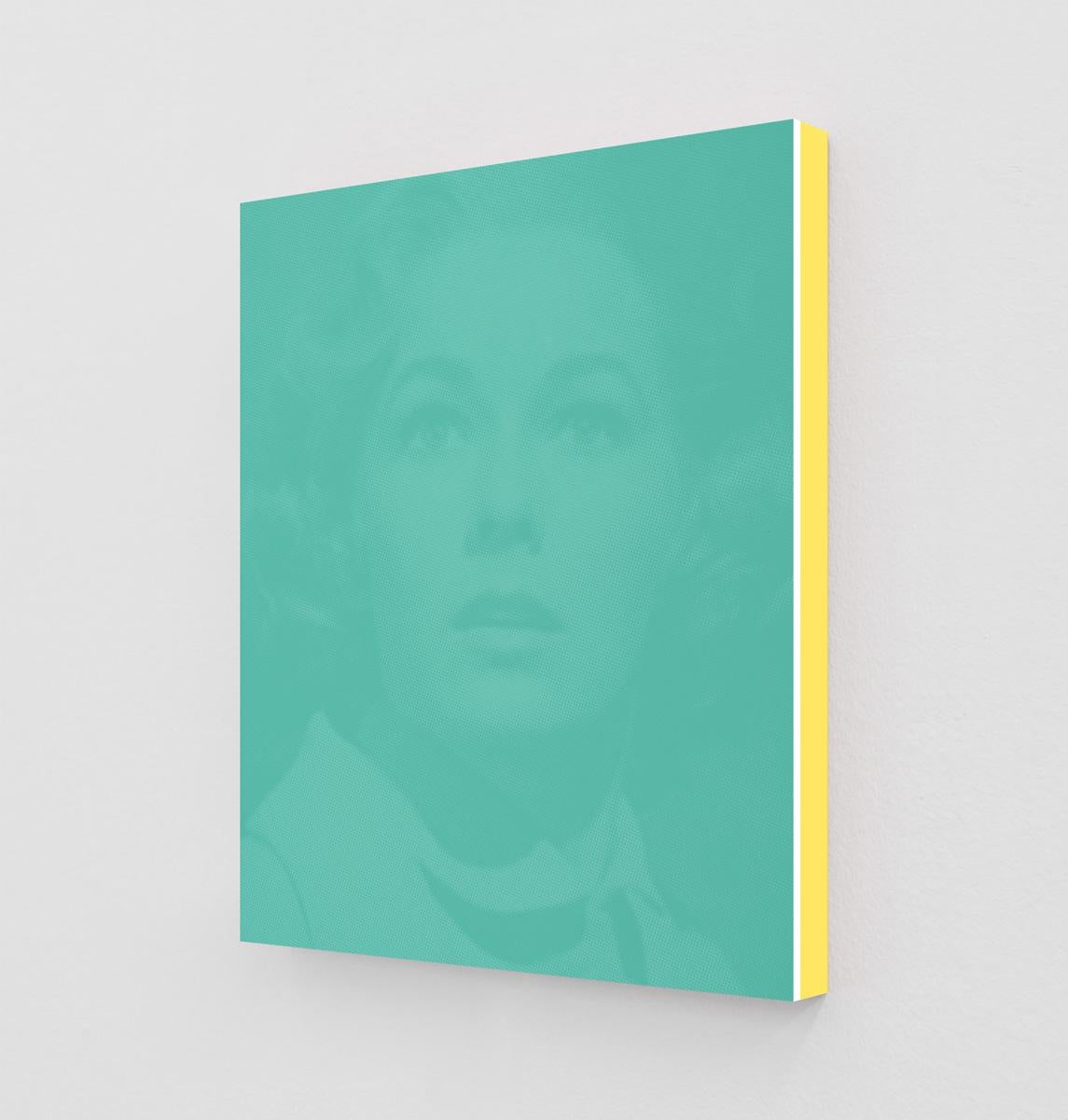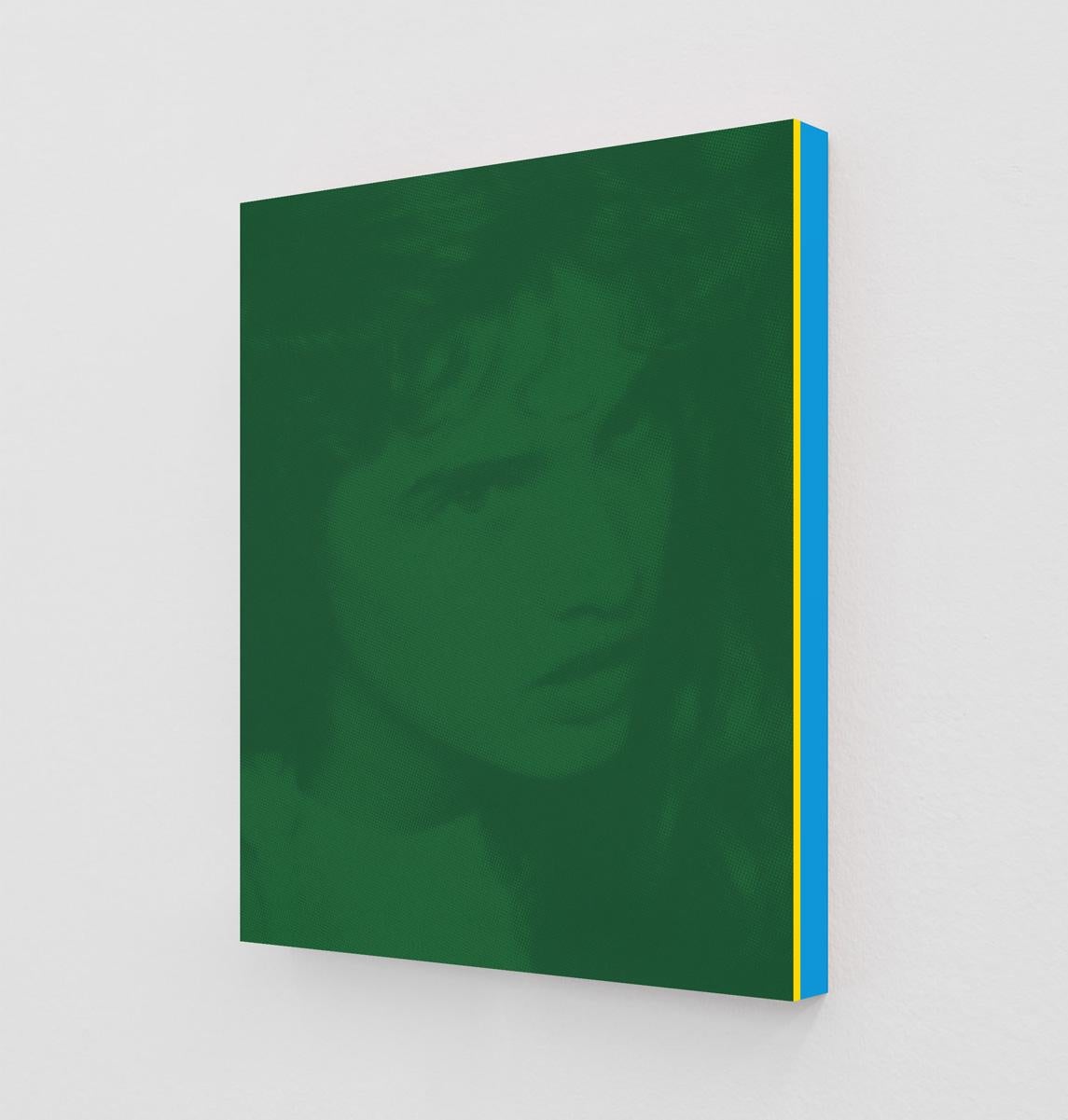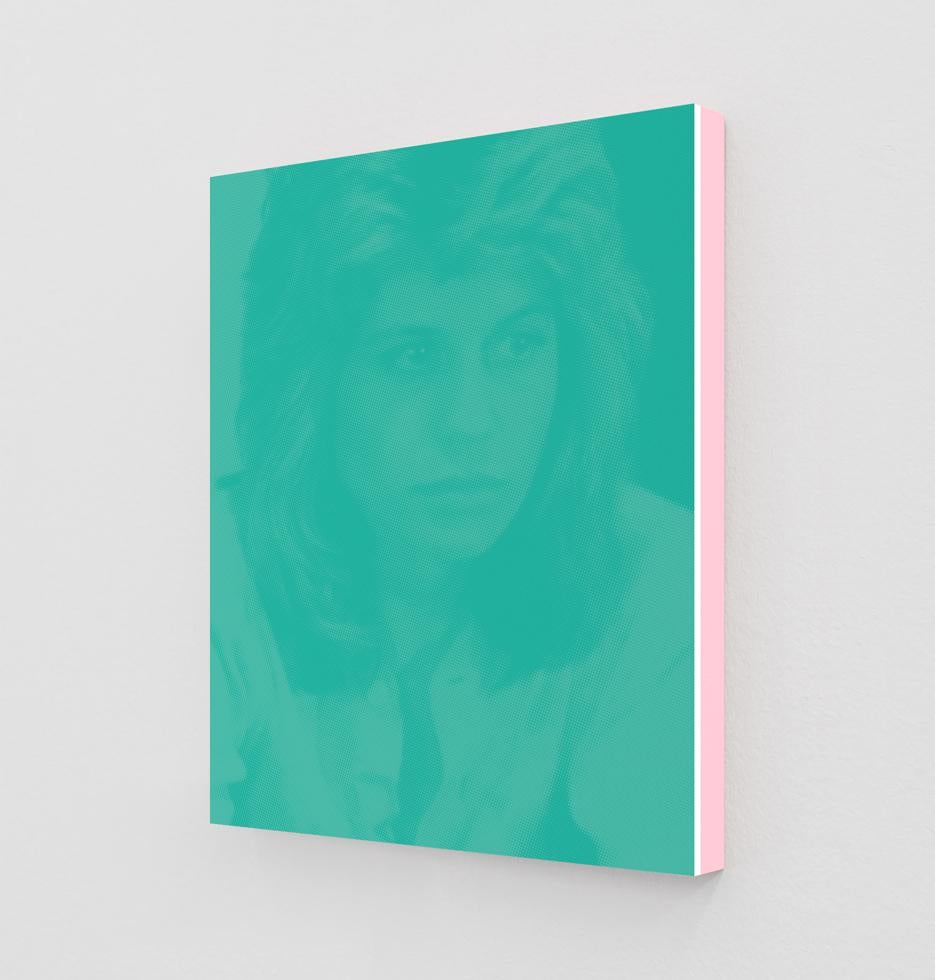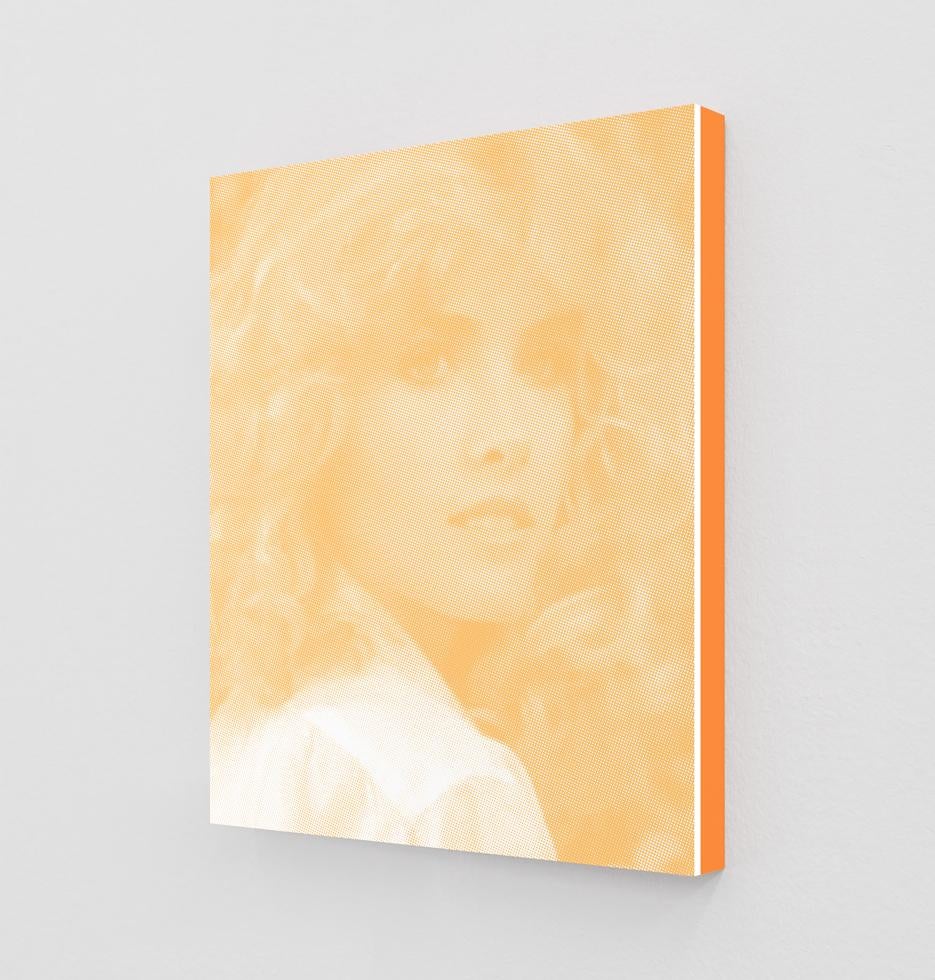Items Similar to "Wood, " Christine Tarkowski, Contemporary Female Artist, Urban Text Art
Want more images or videos?
Request additional images or videos from the seller
1 of 6
Christine Tarkowski"Wood, " Christine Tarkowski, Contemporary Female Artist, Urban Text Art2007
2007
About the Item
Christine Tarkowski (American, b. 1967)
Wood, 2007
Screenprint in colors on wood veneer
36 x 24 inches
From the edition of 3
Provenance:
Priska C. Juschka Fine Art, New York
Christine Tarkowski is an American sculptor and installation artist. Through her art, she explores the impact of the built environment (including architecture and textile technologies) on the natural environment. Tarkowski was born in Norwich, Connecticut, but now lives and works in Chicago, Illinois. After studying textile design at the Fashion Institute of Technology, she earned her BFA at the Parsons School of Design in New York City in 1989 and her MFA at the School of the Art Institute of Chicago in Chicago, IL in 1992. In addition to her work as an artist, Christine has been an associate professor in the Fiber and Material Studies department at the School of the Art Institute of Chicago since 2003. In 2001, she received a Creative Capital Visual Arts award and in 2005, she received a Richard H. Driehaus Foundation Individual Artist Award.
She has exhibited significant solo and group shows, including the exhibition titled, Last Things Will Be First and First Things Will be Last that was on display at the Chicago Cultural Center from January 29 - May 2, 2010. In this piece, as with many of Tarkowski’s works, there was the incorporation of a geodesic dome, which she uses as a symbol for the failed utopia. The utopian impulse of modernism and its failure is a recurring theme in her work, manifesting through transformed and mimicked urban materials like wallpaper, industrial siding, and trash.
- Creator:Christine Tarkowski (1967, American)
- Creation Year:2007
- Dimensions:Height: 39 in (99.06 cm)Width: 27 in (68.58 cm)
- Medium:
- Movement & Style:
- Period:
- Condition:
- Gallery Location:New York, NY
- Reference Number:1stDibs: LU184129905972
About the Seller
5.0
Platinum Seller
These expertly vetted sellers are 1stDibs' most experienced sellers and are rated highest by our customers.
Established in 2021
1stDibs seller since 2022
62 sales on 1stDibs
Typical response time: 1 hour
- ShippingRetrieving quote...Ships From: Larchmont, NY
- Return PolicyA return for this item may be initiated within 3 days of delivery.
More From This SellerView All
- "Voyage I, " Rosamond Berg, Female Contemporary Minimalist Sculpture ArtistLocated in New York, NYRosamond Berg (American, 1931 - 2018) Voyage I, 1982 Mixed media construction including hand-dyed cotton cloth pouches 24 x 24 inches Signed, titled an...Category
1980s Contemporary Abstract Sculptures
MaterialsCotton, Thread, Glass, Wood
- "Post Office Tower, London, " Daniel Rich, Contemporary Precisionism, YellowLocated in New York, NYDaniel Rich (German, b. 1977) Post Office Tower, London, UK, 2004 Enamel on wood 60 x 60 1/8 inches Signed, dated, and titled in black marker on verso Pro...Category
Early 2000s Contemporary Landscape Paintings
MaterialsEnamel
- "The Capture, " Jacob Lawrence, Harlem Renaissance, Black Art, Haitian SeriesBy Jacob LawrenceLocated in New York, NYJacob Lawrence (1917 - 2000) The Capture of Marmelade (from The Life of Toussaint L'Ouverture series), 1987 Color screenprint on Bainbridge Two Ply Rag paper Sheet 32 1/8 x 22 1/16 inches Sight 29 3/4 x 19 1/4 inches A/P 1/30, aside from the edition of 120 Signed, titled, dated, inscribed "A/P" and numbered 1/30 in pencil, lower margin. Literature: Nesbett L87-2. A social realist, Lawrence documented the African American experience in several series devoted to Toussaint L’Ouverture, Frederick Douglass, Harriet Tubman, life in Harlem, and the civil rights movement of the 1960s. He was one of the first nationally recognized African American artists. “If at times my productions do not express the conventionally beautiful, there is always an effort to express the universal beauty of man’s continuous struggle to lift his social position and to add dimension to his spiritual being.” — Jacob Lawrence quoted in Ellen Harkins Wheat, Jacob Lawrence: The Frederick Douglass and Harriet Tubman Series of 1938 – 40. The most widely acclaimed African American artist of this century, and one of only several whose works are included in standard survey books on American art, Jacob Lawrence has enjoyed a successful career for more than fifty years. Lawrence’s paintings portray the lives and struggles of African Americans, and have found wide audiences due to their abstract, colorful style and universality of subject matter. By the time he was thirty years old, Lawrence had been labeled as the “foremost Negro artist,” and since that time his career has been a series of extraordinary accomplishments. Moreover, Lawrence is one of the few painters of his generation who grew up in a black community, was taught primarily by black artists, and was influenced by black people. Lawrence was born on September 7, 1917,* in Atlantic City, New Jersey. He was the eldest child of Jacob and Rosa Lee Lawrence. The senior Lawrence worked as a railroad cook and in 1919 moved his family to Easton, Pennsylvania, where he sought work as a coal miner. Lawrence’s parents separated when he was seven, and in 1924 his mother moved her children first to Philadelphia and then to Harlem when Jacob was twelve years old. He enrolled in Public School 89 located at 135th Street and Lenox Avenue, and at the Utopia Children’s Center, a settlement house that provided an after school program in arts and crafts for Harlem children. The center was operated at that time by painter Charles Alston who immediately recognized young Lawrence’s talents. Shortly after he began attending classes at Utopia Children’s Center, Lawrence developed an interest in drawing simple geometric patterns and making diorama type paintings from corrugated cardboard boxes. Following his graduation from P.S. 89, Lawrence enrolled in Commerce High School on West 65th Street and painted intermittently on his own. As the Depression became more acute, Lawrence’s mother lost her job and the family had to go on welfare. Lawrence dropped out of high school before his junior year to find odd jobs to help support his family. He enrolled in the Civilian Conservation Corps, a New Deal jobs program, and was sent to upstate New York. There he planted trees, drained swamps, and built dams. When Lawrence returned to Harlem he became associated with the Harlem Community Art Center directed by sculptor Augusta Savage, and began painting his earliest Harlem scenes. Lawrence enjoyed playing pool at the Harlem Y.M.C.A., where he met “Professor” Seifert, a black, self styled lecturer and historian who had collected a large library of African and African American literature. Seifert encouraged Lawrence to visit the Schomburg Library in Harlem to read everything he could about African and African American culture. He also invited Lawrence to use his personal library, and to visit the Museum of Modern Art’s exhibition of African art in 1935. As the Depression continued, circumstances remained financially difficult for Lawrence and his family. Through the persistence of Augusta Savage, Lawrence was assigned to an easel project with the W.P.A., and still under the influence of Seifert, Lawrence became interested in the life of Toussaint L’Ouverture, the black revolutionary and founder of the Republic of Haiti. Lawrence felt that a single painting would not depict L’Ouverture’s numerous achievements, and decided to produce a series of paintings on the general’s life. Lawrence is known primarily for his series of panels on the lives of important African Americans in history and scenes of African American life. His series of paintings include: The Life of Toussaint L’Ouverture, 1937, (forty one panels), The Life of Frederick Douglass, 1938, (forty panels), The Life of Harriet Tubman, 1939, (thirty one panels), The Migration of the Negro,1940 – 41, (sixty panels), The Life of John Brown, 1941, (twenty two panels), Harlem, 1942, (thirty panels), War, 1946 47, (fourteen panels), The South, 1947, (ten panels), Hospital, 1949 – 50, (eleven panels), Struggle: History of the American People, 1953 – 55, (thirty panels completed, sixty projected). Lawrence’s best known series is The Migration of the Negro, executed in 1940 and 1941. The panels portray the migration of over a million African Americans from the South to industrial cities in the North between 1910 and 1940. These panels, as well as others by Lawrence, are linked together by descriptive phrases, color, and design. In November 1941 Lawrence’s Migration series was exhibited at the prestigious Downtown Gallery in New York. This show received wide acclaim, and at the age of twenty four Lawrence became the first African American artist to be represented by a downtown “mainstream” gallery. During the same month Fortune magazine published a lengthy article about Lawrence, and illustrated twenty six of the series’ sixty panels. In 1943 the Downtown Gallery exhibited Lawrence’s Harlem series, which was lauded by some critics as being even more successful than the Migration panels. In 1937 Lawrence obtained a scholarship to the American Artists School in New York. At about the same time, he was also the recipient of a Rosenwald Grant for three consecutive years. In 1943 Lawrence joined the U.S. Coast Guard and was assigned to troop ships that sailed to Italy and India. After his discharge in 1945, Lawrence returned to painting the history of African American people. In the summer of 1947 Lawrence taught at the innovative Black Mountain College in North Carolina at the invitation of painter Josef Albers. During the late 1940s Lawrence was the most celebrated African American painter in America. Young, gifted, and personable, Lawrence presented the image of the black artist who had truly “arrived”. Lawrence was, however, somewhat overwhelmed by his own success, and deeply concerned that some of his equally talented black artist friends had not achieved a similar success. As a consequence, Lawrence became deeply depressed, and in July 1949 voluntarily entered Hillside Hospital in Queens, New York, to receive treatment. He completed the Hospital series while at Hillside. Following his discharge from the hospital in 1950, Lawrence resumed painting with renewed enthusiasm. In 1960 he was honored with a retrospective exhibition and monograph prepared by The American Federation of Arts. He also traveled to Africa twice during the 1960s and lived primarily in Nigeria. Lawrence taught for a number of years at the Art Students League in New York, and over the years has also served on the faculties of Brandeis University, the New School for Social Research, California State College at Hayward, the Pratt Institute, and the University of Washington, Seattle, where he is currently Professor Emeritus of Art. In 1974 the Whitney Museum of American Art in New York held a major retrospective of Lawrence’s work that toured nationally, and in December 1983 Lawrence was elected to the American Academy of Arts and Letters. The most recent retrospective of Lawrence’s paintings was organized by the Metropolitan Museum of Art in 2020, and was accompanied by a major catalogue. Lawrence met his wife Gwendolyn Knight...Category
1970s American Modern Figurative Prints
MaterialsScreen, Paper
- "Untitled, " Thiago Rocha Pitta, Brazilian Contemporary Grey WatercolorLocated in New York, NYThiago Rocha Pitta Untitled, 2006 Watercolor on paper 30 x 23 inches Brazil-based artist Thiago Rocha Pitta’s (b. 1980) temporal and sensitive body of work depicts interventions wit...Category
Early 2000s Contemporary Abstract Drawings and Watercolors
MaterialsPaper, Watercolor
- "Untitled, " Thiago Rocha Pitta, Contemporary Grey WatercolorLocated in New York, NYThiago Rocha Pitta Untitled, 2006 Watercolor on paper 30 x 23 inches Brazil-based artist Thiago Rocha Pitta’s (b. 1980) temporal and sensitive body of work depicts interventions wit...Category
Early 2000s Contemporary Abstract Drawings and Watercolors
MaterialsPaper, Watercolor
- "Sonoma Mountain, " Fred R. Parker, California Landscape, Olive Tree FarmLocated in New York, NYFred Parker Sonoma Mountain, 1996 Signed, dated, and titled on the reverse Acrylic, pastel, and pencil on board 21 1/2 x 29 1/2 inchesCategory
1990s Contemporary Landscape Paintings
MaterialsOil Pastel, Acrylic, Board, Pencil
You May Also Like
- Noomi Rapace as Elizabeth (Newman Red)By Daniel HandalLocated in New York, NYTwo-color screen print, painted museum box (Edition of 3 + 2 APs) Signed and numbered on label, verso From the series, "Final Girls" This artwork is offered by ClampArt, located in...Category
2010s Contemporary Portrait Prints
MaterialsWood, Acrylic, Screen
- Vera Miles as Lila (Verdigris)By Daniel HandalLocated in New York, NYTwo-color screen print, painted museum box (Edition of 3 + 2 APs) Signed and numbered on label, verso From the series, "Final Girls" This artwork is offered by ClampArt, located in...Category
2010s Contemporary Portrait Prints
MaterialsWood, Acrylic, Screen
- Julianne Moore as Clarice (Egyptian Blue)By Daniel HandalLocated in New York, NYTwo-color screen print, painted museum box (Edition of 3 + 2 APs) Signed and numbered on label, verso From the series, "Final Girls" This artwork is offered by ClampArt, located in...Category
2010s Contemporary Portrait Prints
MaterialsWood, Acrylic, Screen
- Heather Langenkamp as Nancy (Emerald Green)By Daniel HandalLocated in New York, NYTwo-color screen print, painted museum box (Edition of 3 + 2 APs) Signed and numbered on label, verso From the series, "Final Girls" This artwork is offered by ClampArt, located in...Category
2010s Contemporary Portrait Prints
MaterialsWood, Acrylic, Screen
- Linda Hamilton as Sarah (Tiffany Blue I)By Daniel HandalLocated in New York, NYTwo-color screen print, painted museum box (Edition of 3 + 2 APs) Signed and numbered on label, verso From the series, "Final Girls" This artwork is offered by ClampArt, located in...Category
2010s Contemporary Portrait Prints
MaterialsWood, Acrylic, Screen
- Kimberly Beck as Trish (Cadmium Yellow)By Daniel HandalLocated in New York, NYTwo-color screen print, painted museum box (Edition of 3 + 2 APs) Signed and numbered on label, verso From the series, "Final Girls" This artwork is offered by ClampArt, located in...Category
2010s Contemporary Portrait Prints
MaterialsWood, Acrylic, Screen
Recently Viewed
View AllMore Ways To Browse
Wood Veneer Art
Wood Female
Female Sculptor
Female Study Wood
January 29
Used Siding
Geodesic Dome
Used Geodesic Dome
Shepard Fairey Money
Retro Camping Tents
Polo Sport Vintage
Rms Queen Elizabeth
Roy Lichtenstein On Sale
Antique Books Pittsburgh
Antique Miniature Bibles
Virgin Mary Print Lithograph
Travel Poster Turin
Windows At Tiffany Book





